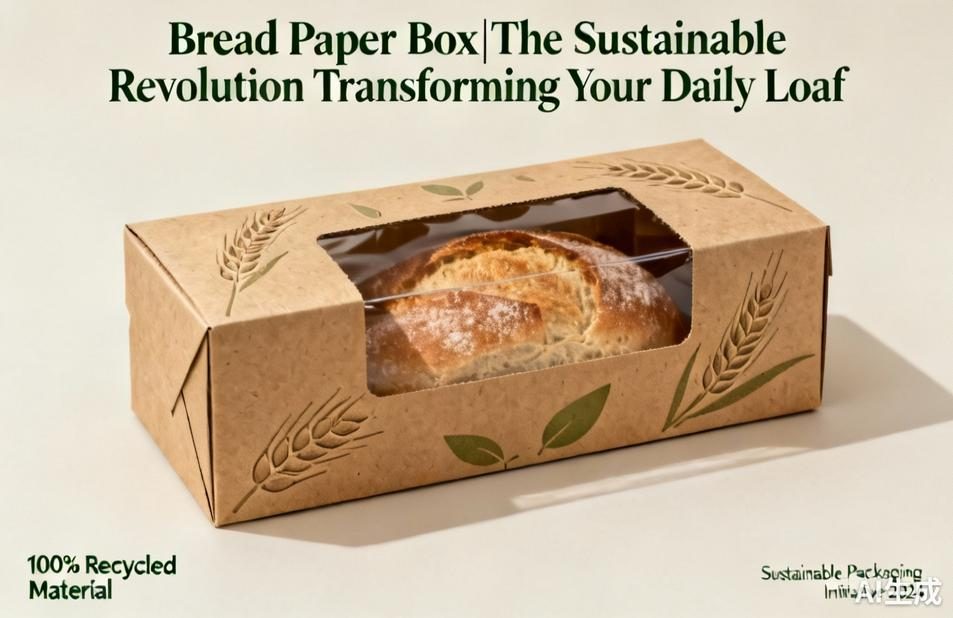
In the quiet hum of morning kitchens worldwide, a small revolution is unfolding inside pantries and on breakfast tables. The humble bread paper box, once merely a functional container, has emerged as an unexpected hero in our collective journey toward sustainability. These unassuming cardboard guardians do more than just preserve freshness—they represent a fundamental shift in how we think about food packaging, waste, and our relationship with the planet.
The evolution of bread packaging tells a fascinating story of changing priorities. For decades, plastic bags dominated supermarket aisles, offering convenience at an environmental cost that would only later become apparent. Today, the crisp, recyclable paper box stands as a testament to how consumer demand can reshape entire industries. Unlike their plastic counterparts, bread paper boxes breathe, allowing the crust to maintain its perfect texture while protecting the soft interior from crushing. This simple yet brilliant design acknowledges that true preservation means protecting both quality and environment.
What makes the modern bread paper box particularly remarkable is its circular lifecycle. Manufactured primarily from recycled cardboard and paper pulp, these containers often complete multiple journeys from shelf to recycling bin to rebirth as new packaging. The typical bread paper box contains approximately 85% recycled material, with many manufacturers committing to 100% post-consumer waste sources. This closed-loop system reduces landfill burden while conserving the water and energy required for virgin paper production—a silent victory for sustainability that unfolds every time we unpack our daily bread.
Beyond environmental credentials, bread paper boxes offer practical advantages that enhance the consumer experience. The rigid structure provides superior protection against the dreaded crushed loaf, while the easy-open tab designs maintain freshness without complicated seals. Many brands now incorporate clever viewing windows made from compostable cellulose, allowing shoppers to inspect the product while keeping the packaging fully recyclable. These thoughtful touches demonstrate how functionality and sustainability can coexist beautifully.
The psychological impact of this packaging shift shouldn’t be underestimated either. There’s something inherently satisfying about sliding a loaf from its paper box—the slight rustle, the natural texture, the subtle grain scent that hints at the freshness within. This multisensory experience connects us more deeply to our food origins than plastic ever could. It reminds us that bread comes from wheat fields and mills, not factory assembly lines, reinforcing the value of quality ingredients and traditional baking methods.
For artisanal bakeries and large-scale producers alike, bread paper boxes have become canvases for brand storytelling. The matte surfaces provide ideal printing conditions for vibrant designs that communicate company values and product differentiators. From minimalist designs emphasizing purity to colorful illustrations celebrating heritage, these boxes serve as silent salespeople on supermarket shelves. More importantly, they allow brands to visibly demonstrate their environmental commitments, building trust with increasingly eco-conscious consumers.
The innovation continues as manufacturers develop new enhancements. Water-resistant coatings derived from plant-based materials now protect against humidity without compromising recyclability. Some companies are experimenting with embedded seeds in the paper pulp, creating boxes that can be planted to grow herbs or flowers after use. Others are developing boxes that decompose completely in home composting systems within weeks. These advancements prove that the bread paper box is not a static solution but an evolving technology responding to our deepening environmental understanding.
As legislation around single-use plastics tightens globally, the bread paper box stands ready to fill the gap. Major retailers are increasingly mandating sustainable packaging from suppliers, while consumers actively seek out brands aligning with their values. This creates a powerful economic incentive for adoption beyond environmental ethics. The scalability of paper box production means they can accommodate everything from petite brioche to substantial sourdough rounds, making them versatile solutions for diverse bakery needs.
Perhaps most importantly, the bread paper box represents a accessible entry point for everyday environmentalism. Unlike major lifestyle changes that require significant adjustment, choosing bread in paper packaging is a simple swap with measurable impact. If every household made this switch, the reduction in plastic waste would be substantial. This demonstrates how small, consistent choices collectively create meaningful change—a lesson that extends far beyond the bakery aisle.
Next time you reach for that warmly familiar loaf, notice the container cradling it. The bread paper box is more than packaging; it’s a statement about the world we want to create—one where convenience and responsibility coexist, where beautiful design serves practical purpose, and where our daily rituals contribute to a healthier planet. In its quiet, unassuming way, the paper box holding your breakfast toast is helping bake a better future for us all.



Leave a Message